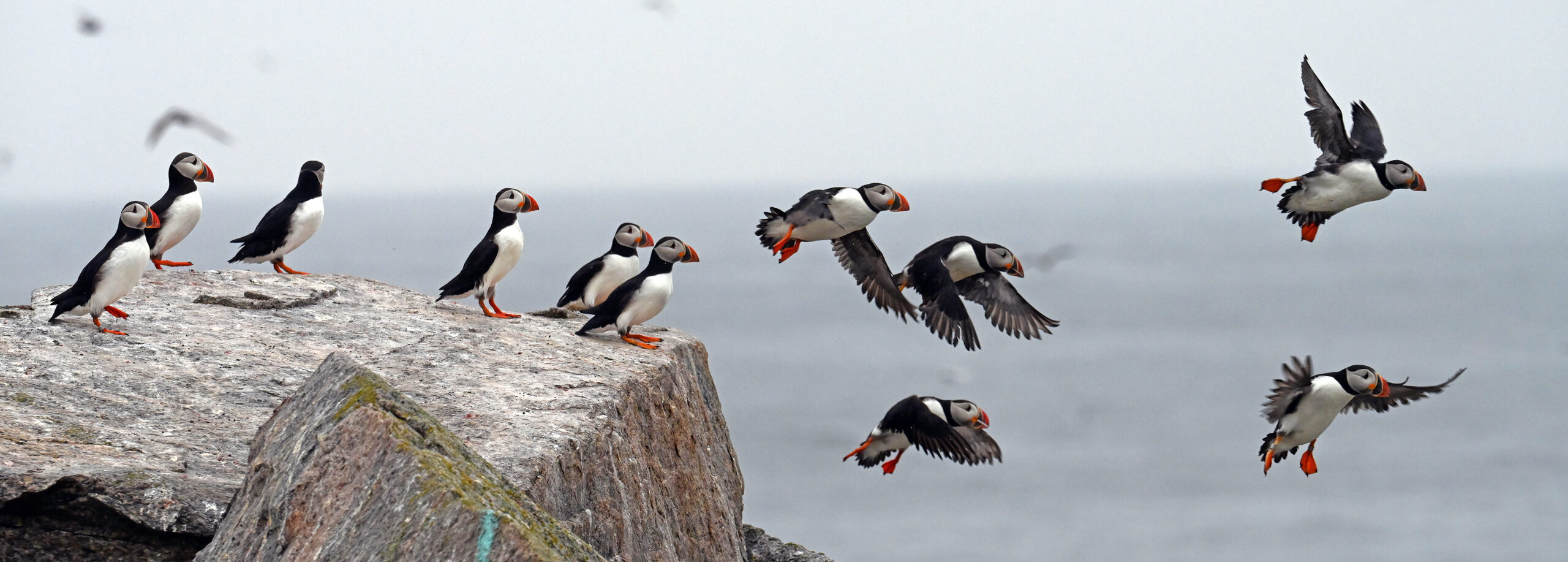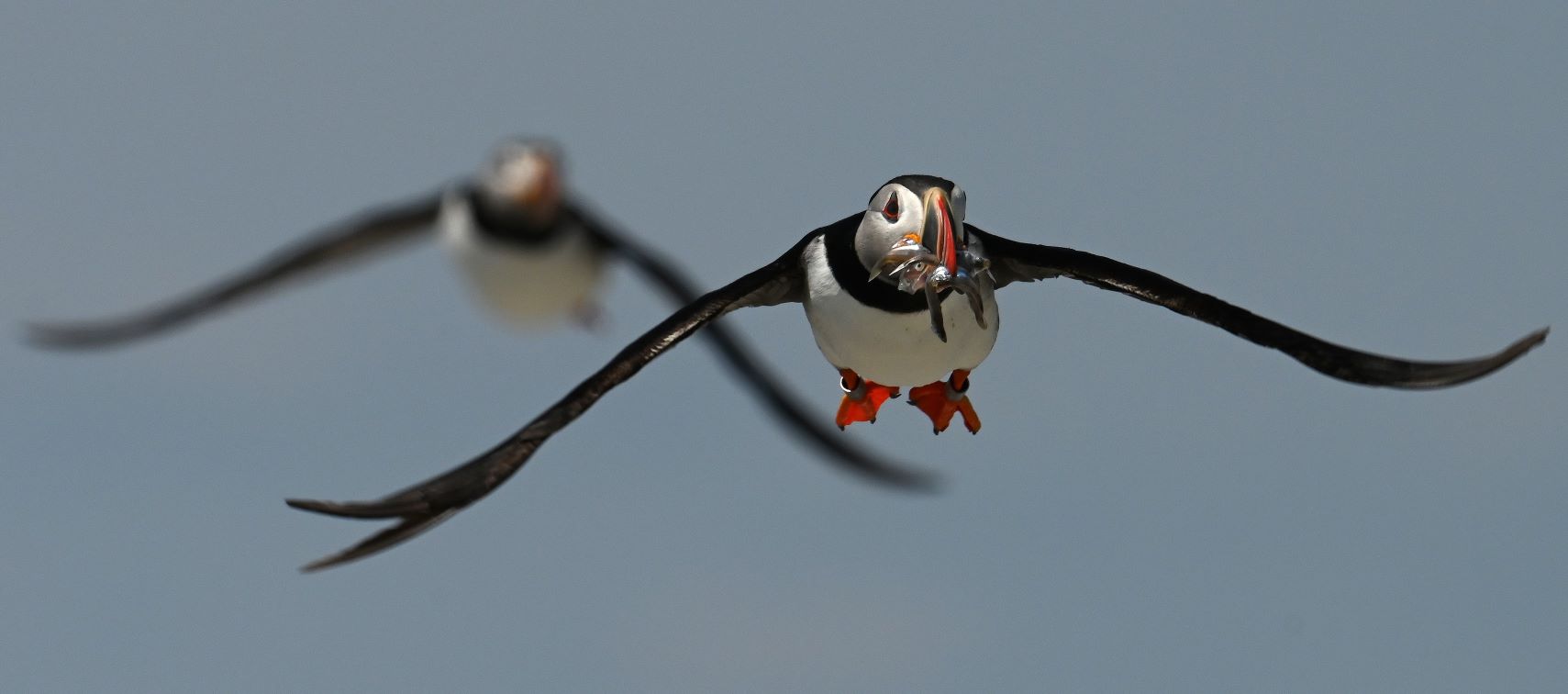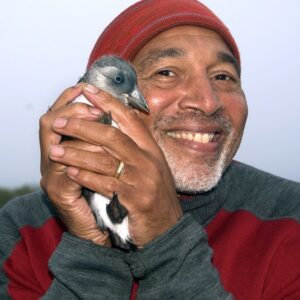From a bird blind on Seal Island, I watched as puffins zoomed in from the sea with a rainbow of fish drooping from their beaks.
They carried copper and golden juvenile haddock, redfish and white hake. Others had pink krill from massive upwellings that created magenta blotches just offshore.
Some even carried bright silver herring: juicy fish that were once key prey for puffins in Maine. Atlantic herring are also a prime commodity for humans, who have overfished the species so badly that the fishery in New England has routinely been shut down early in recent years.
To see a number of puffins bringing herring to chicks was a stirring reminder of what the ocean can still offer.


Seal Island, which sits 21 miles off Rockland, was once home to the largest Atlantic puffin colony in the Gulf of Maine. It is now managed by the Audubon Seabird Institute, and was the second island that Audubon’s Project Puffin restored puffins to after a century’s absence spurred by hunting in the late 1800s. The first was Eastern Egg Rock, six miles off Pemaquid Point.
Both islands were seeded with puffin chicks brought from Newfoundland. Puffins began breeding anew on Eastern Egg Rock in 1981 and Seal Island in 1992.
This summer, despite the long-term warming of the Gulf of Maine and long-term increase in the severity of weather events, conditions were so uneventful that Seal Island set a record for breeding puffins.
The crew of Coco Faber, Amiel Hopkins, Liv Ridley, Reed Robinson and Nacho Gutierrez counted 672 active puffin burrows, about 100 more than the last census five years ago. The total number of known burrows surpassed 1,000 for the first time.

Other birds also did well. Razorbills, a larger cousin of the puffin, established a record 101 active burrows.
“The weights for the puffin chicks were just so good,” said Faber, 30, the crew supervisor. “Unlike many recent years when there were big shifts or drops in what puffin parents could find, this was a summer where they steadily found fish.”
That buoyant mood was shared on Matinicus Rock, another island 23 miles from Rockland, also managed by the Seabird Institute. Crew supervisor Tracey Faber, Coco’s sister, said that not only were the puffin chicks doing well, but Arctic tern and common tern nest numbers were up.
Common murres, another bird re-established in Maine after being gone for more than 100 years, fledged a record 16 chicks.
“We saw some great growth in some birds,” Tracey Faber said.


But elsewhere there were reminders that seabird islands in the Gulf of Maine are highly vulnerable.
Earlier this month, researchers at the Gulf of Maine Seabird Working Group gathered at a conference hosted by the Seabird Institute in Bremen.
One topic was the damage caused by last winter’s violent storms, particularly on Petit Manan Island, which sits off a stretch of Downeast coastline that got hammered in January.

Island supervisor Amanda McFarland and U.S. Fish and Wildlife Service biologist Linda Welch said the vast majority of natural sod burrows under relatively small rocks and artificial nesting structures were destroyed.
The artificial structures had been built by Welch over the years to entice puffins to breed higher up on the island.
This winter’s obliteration left puffin parents competing for available space, with multiple eggs in the same burrow complex and parents trying to roll unwanted eggs out of the way — puffins hatch and raise only one chick at a time.
“There was a nest of a 30-year-old nesting pair that was shot down the shoreline 30 feet. We found burrow markers tossed all over the island,” said McFarland. “It was so ironic and sad because the food for the puffins was so good.”

The island’s puffins saw one of their lowest birth rates in recent years.
“When I saw the damage, I almost started to cry,” Welch said. “We really need to think more than ever about taking a hard look at climate resilience for seabirds.”







